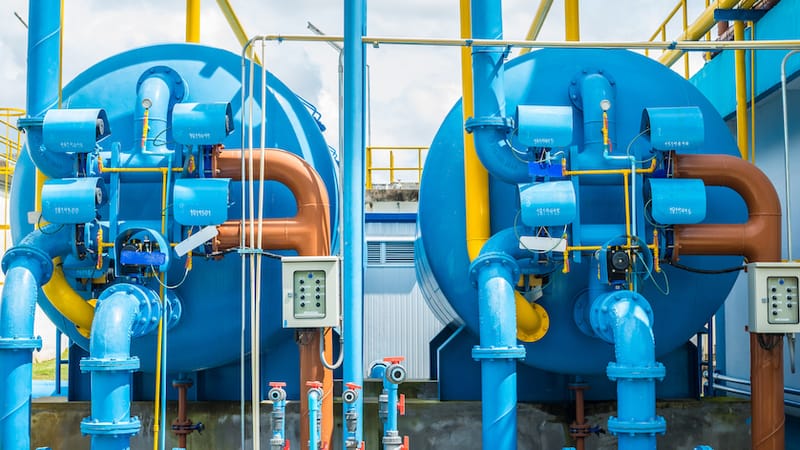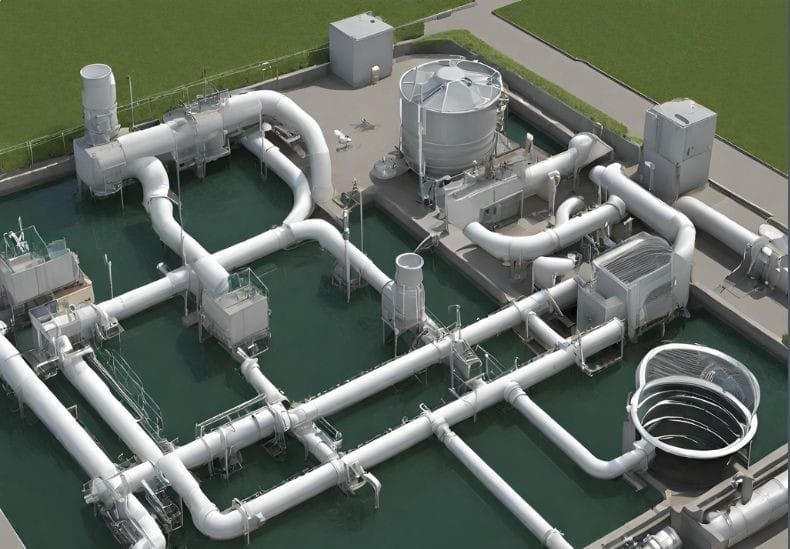Pump Technologies in Wastewater Treatment: The Hydraulic Symphony
Introduction
In the symphony of wastewater treatment, pumps play a crucial role as conductors orchestrating the flow of fluids and solids through the intricate passages of purification. Each type of pump acts as a virtuoso, bringing its unique capabilities to the forefront, ensuring efficiency, reliability, and sustainability in wastewater treatment plants. In this comprehensive guide, we embark on a journey through the diverse world of pump technologies utilized in wastewater treatment, shedding light on their applications, advantages, and pivotal roles in the pursuit of cleaner waterways.

Challenges in Pumping Wastewater
Pumping wastewater poses a myriad of challenges that demand innovative solutions and meticulous planning. One of the foremost challenges is the diverse composition of wastewater, which can vary widely in terms of solids content, viscosity, and chemical composition. This heterogeneity necessitates the selection of pumps capable of handling abrasive solids, shear-sensitive fluids, and corrosive chemicals with precision and reliability.
Furthermore, the presence of debris and foreign objects in wastewater poses a constant threat of clogging and damage to pump components. Grinder pumps offer a solution by pulverizing solid waste before pumping, but they require regular maintenance to ensure optimal performance. Additionally, the abrasive nature of wastewater can lead to wear and tear on pump components, necessitating frequent inspections and replacements to prevent downtime and maintain efficiency.
Hydraulic challenges also abound, particularly in lift stations and submerged applications where pumps must overcome significant head pressures to transport wastewater to higher elevations. Submersible pumps excel in these environments, but proper sizing and configuration are critical to avoid cavitation and premature failure.
Moreover, energy consumption and operational costs pose ongoing challenges in wastewater treatment. While advancements in pump technology have led to improvements in energy efficiency, optimizing pump performance and minimizing energy consumption remain key objectives for treatment plant operators.

Innovative solutions with Pump Technologies
Variable frequency drives and smart pump controls, hold promise for reducing energy consumption and optimizing pump operation. However, implementing these technologies requires investment and expertise, highlighting the need for collaboration between industry stakeholders to address the challenges of pumping wastewater effectively and sustainably.
Centrifugal Pumps: The Versatile Maestros
Centrifugal pumps stand as the cornerstone of wastewater treatment, epitomizing versatility and efficiency. Harnessing rotational kinetic energy, these pumps deftly navigate through various treatment stages, seamlessly transferring wastewater with precision. Their ability to handle fluctuating flow rates and pressures makes them indispensable in primary clarification, secondary treatment, and beyond.
Submersible Pumps: Descending into Depths with Grace
Submersible pumps emerge as silent guardians, descending into the depths of wastewater with unparalleled resilience. Designed to operate submerged in corrosive fluids and abrasive solids, these pumps excel in lift stations and submerged applications. Their hermetically sealed design and space-saving configuration make them ideal for navigating the submerged intricacies of treatment tanks.
Positive Displacement Pumps: Precision in Motion
Positive displacement pumps embody precision and reliability, meticulously metering fixed volumes of fluid with unwavering accuracy. In wastewater treatment, they find their niche in dosing chemicals and additives, ensuring consistent and controlled treatment processes. Their ability to handle high-viscosity fluids and maintain flow rates under varying pressures makes them indispensable assets in the pursuit of water purity
Air Diaphragm Pumps: Pneumatic Pioneers
Air diaphragm pumps emerge as pneumatic pioneers, harnessing compressed air to navigate through the challenges of sludges and slurries. Operating dry and self-priming, these pumps excel in transferring abrasive fluids and handling intermittent flows with ease. Their robust construction and simplicity make them stalwart companions in wastewater treatment, tackling demanding applications with efficiency and reliability.
Progressive Cavity Pumps: The Epitome of Precision
Progressive cavity pumps epitomize precision in fluid handling, delivering a smooth, pulsation-free flow ideal for metering and dosing applications. With their helical rotor nestled within a fixed stator, these pumps navigate through viscous slurries and shear-sensitive fluids with finesse. While demanding higher maintenance, their performance in critical applications remains unmatched.
Vertical Turbine Pumps: Conquering Depths with Grace
Vertical turbine pumps rise to the challenge of groundwater extraction, conquering depths with grace and efficiency. With multiple stages of impellers stacked vertically, they ensure a steady supply of water for treatment processes, even from considerable depths. Their reliability and efficiency make them indispensable assets in remote locales and sprawling treatment facilities alike.
Grinder Pumps: Guardians Against Blockages
Grinder pumps stand as guardians against the menace of blockages and clogs, equipped with cutting blades to pulverize solid waste before pumping. From residential areas to rugged terrains, these pumps ensure uninterrupted flow in sewer lines, albeit demanding regular maintenance. Their role in preserving the integrity of wastewater systems is paramount, ensuring the smooth passage of solids and slurries alike.

The Future with its Technologies
In the realm of pump technology for wastewater treatment, the horizon holds potential for enhanced efficiency, reliability, and sustainability. Progress in materials science and engineering is propelling the creation of pump components that are more durable and resistant to corrosion, thereby prolonging pump lifespan and decreasing maintenance needs.
Moreover, the incorporation of digital advancements like Internet of Things (IoT) sensors and predictive analytics is transforming how pumps are monitored and maintained. By providing real-time data insights, these technologies facilitate proactive maintenance scheduling and predictive detection of potential failures, ultimately reducing downtime and maximizing pump efficiency.
Regarding energy efficiency, there is a growing trend towards embracing variable frequency drives (VFDs) and high-efficiency pump designs. VFDs enable pumps to adjust their speeds according to demand, thereby decreasing energy usage and cutting operational expenses.
Moreover, there is a rising interest in the concept of energy recovery within wastewater treatment. Innovative pump technologies are being developed to harness hydraulic energy, either for generating electricity or for offsetting energy consumption during treatment procedures.

Conclusion
In the grand symphony of wastewater treatment, pumps stand as virtuosos, guiding fluids and solids through the intricate passages of purification with precision and grace. From the stalwart versatility of centrifugal pumps to the precision of positive displacement pumps, each type brings its unique strengths to the forefront, ensuring efficiency, reliability, and sustainability in wastewater treatment wastewater treatment plants. As the quest for cleaner waterways continues, the evolution of pump technologies will undoubtedly play a pivotal role, driving innovation and excellence in the pursuit of environmental stewardship.